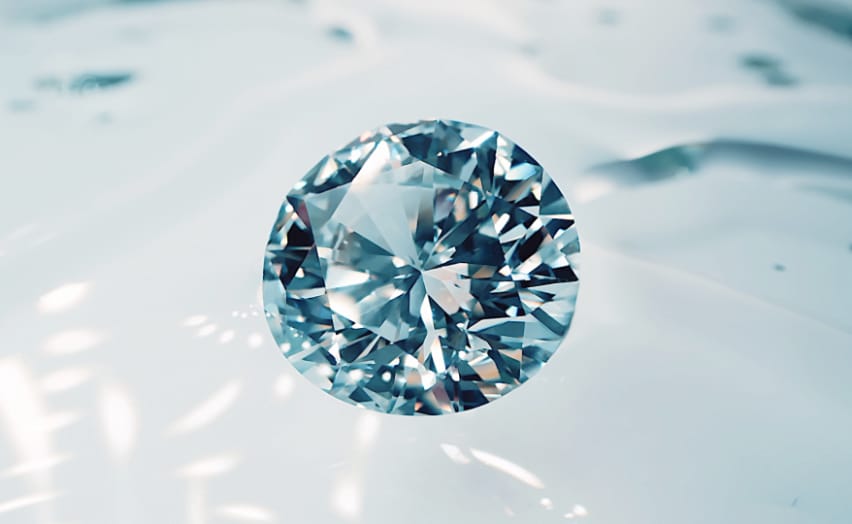The unique, beautiful and finite – why are diamonds so rare?
Older than mankind and almost as old as the earth itself, natural diamonds are unique gifts of nature. Each one is different, just like a snowflake and no two are the same, but how are diamonds formed and why are diamonds rare?
The rarest gift of all

Like all of our planet’s natural resources, diamonds are finite and only getting rarer. Nature will not bring anymore diamonds to the surface from the Earth’s mantle as the volcanic activity that brought them there ended tens of millions of years ago. This means that the diamonds that we do have are even more precious and highly sought-after, making them the ultimate symbol of love.

Extreme conditions and harsh terrains

In order for a natural diamond to be formed, unique conditions and geological events are required. Pressure of between 45-60 KBR is needed, at depths of 125-200km below the earth's surface. This is around fifty thousand times atmospheric pressure which is the equivalent to putting the point of the Eiffel Tower upside down on your hand.
Finding a piece of Forever
Over the last 140 years, 7,000 kimberlite pipes (the rock in which diamonds can be found) have been sampled and only around 1,000 of these pipes actually contain any diamonds.

Of these 1,000, only around 60 have been sufficiently rich in diamonds to be economically viable. And of these 60, only 7 mines, including De Beers Group’s Jwaneng, Orapa and Venetia mines, are responsible for most of the world’s diamonds. This proves, that even over such an expanse of time how truly rare it is to find these small, glittering pieces of Forever.
The rare and the beautiful
Sometimes it can be hard to understand how truly rare diamonds are, but if you were to gather together all the diamonds from around the world, ever polished since the beginning of time, they would fill only one double-decker bus. With a rigorous selection process, De Beers Forevermark inscribed diamonds would only fill just over two tyres of the bus, proving how truly beautiful and rare a De Beers Forevermark diamond is.


The colours of the rainbow
Traditional colourless diamonds that we all picture, are not the only type of diamond. Even rarer than colourless are the highly sought after coloured diamonds. Less than 1/10,000 gem-quality diamonds are natural fancy yellow and red diamonds are so rare that only around twenty to thirty are known to exist in the entire world.

One in a million
Like coloured diamonds, large diamonds are also incredibly rare – a diamond over one carat in weight is one in a million. The biggest diamond that has ever been found is the Cullinan, weighing in at 530.20 carats, making it the largest cut diamond in the world.


The rarest of them all - Forevermark diamonds
Formed over millions of years, natural diamonds are incredibly rare and unique gifts from nature. Created in only the most extreme of environments, these valuable pieces of Forever are only getting rarer, so we must cherish the ones we have. For the ultimate choice of diamonds and to ensure absolute beauty and rarity, Forevermark diamonds are the result of a 17-step selection process, which is why less than 1% of the world’s natural diamonds are eligible to become Forevermark.
Stop into McCaskill & Company in Destin, Florida and see our De Beers Forevermark Collection and learn more about their diamonds.



